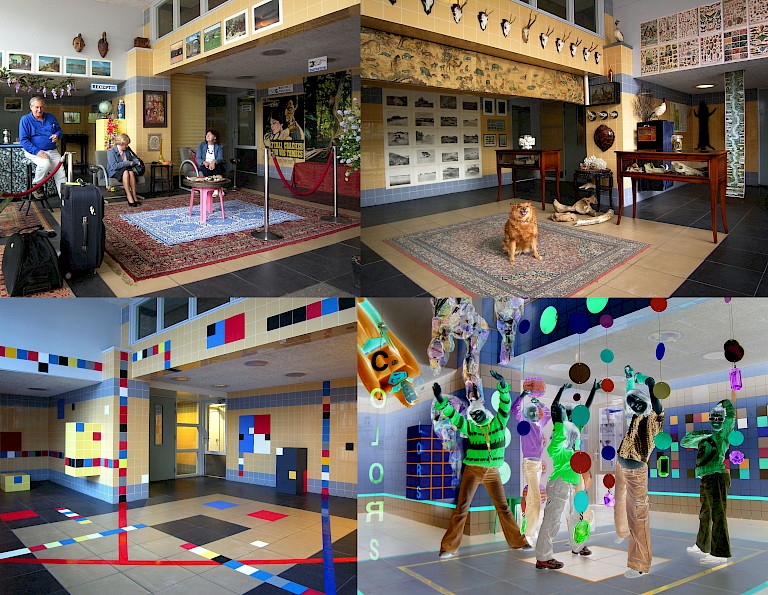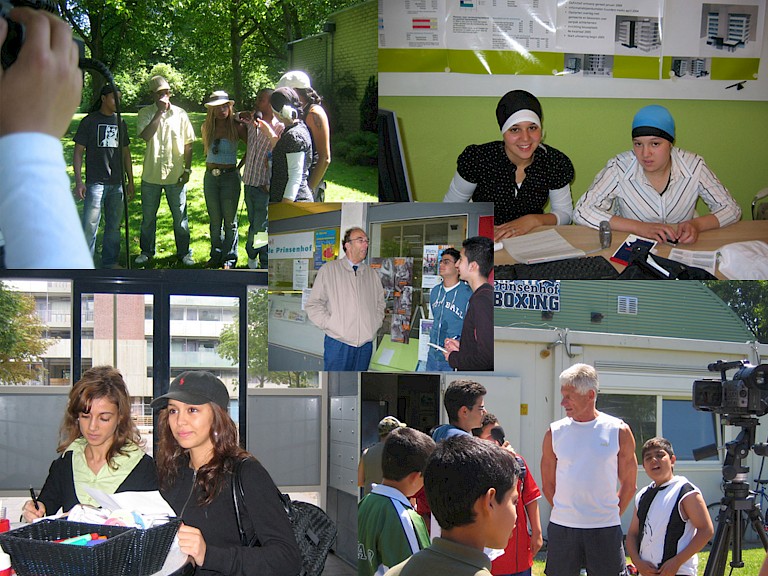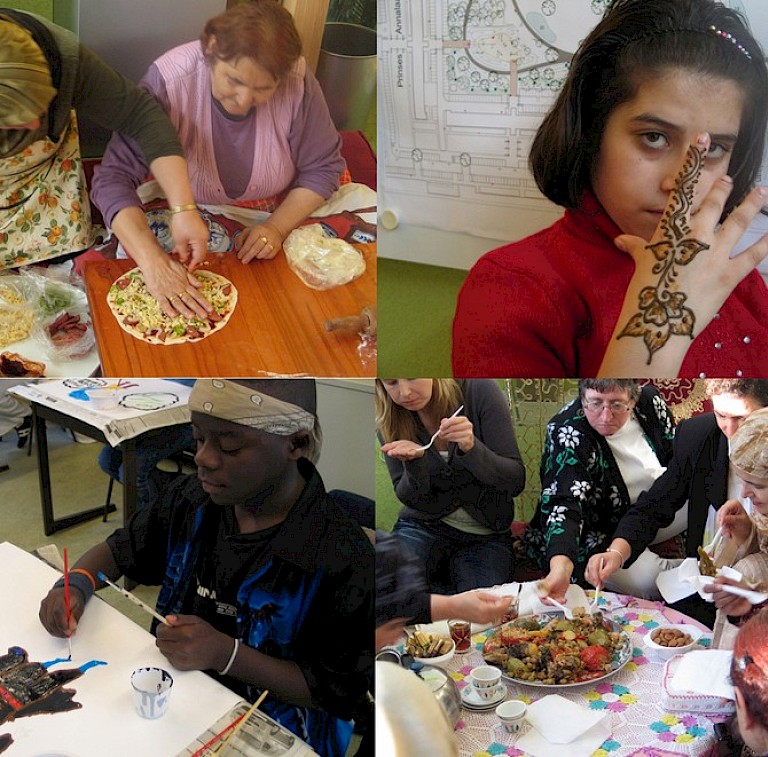



De Werkplaatsen literally translates to ‘workshops’ in English, and the project is, in fact, workshop based. As a platform, the workshop enabled residents to choose the artists they wanted to work with to create a new design for the entranceways of their apartment block. It also allowed teams of artists and residents to engage in negotiations, decisions and the actual task of renovating these sites. Harold Schouten and Mira Kho additionally facilitated a series of cultural workshops, making possible new encounters between residents and thus contributing to social cohesion in the neighborhood. One of these was a cooking workshop where gastronomes of different ages and cultural backgrounds came together to prepare and share meals. Another was a workshop based on the sharing of new recipes and the creation of a cookbook. There was also a digital workshop for children as well as a theatre.
A survey of the documentary images for this project reveals an astonishing aesthetic diversity in the completed redesign and renovation, reflecting, perhaps, the diversity of aesthetic sensitivities in different resident and artist groups. This alone suggests that the project was successful as a placemaking initiative, transforming previously uniform spaces into visually distinct living places with identities shaped by collective efforts. The project was ambitious, requiring agreements with building authorities and the close cooperation of many residents for its realization. It was also innovative in combining the collaborative renovation of the entranceways with workshops involving senses other than the visual, for example, taste. Anecdotal accounts suggest that the after-effects of the project included a reduction in small-scale street crime, with residents reporting a greater sense of security in the Prinsenhof complex.
De Werkplaatsen belongs to a growing tide of participatory art projects with socially ameliorative goals, and is commendable for the professional execution of the renovations, and the brokering of new relationships between residents and artists, and between residents themselves. The fact that it secured financing from housing authorities (Wooninvest in Leidschendam and later Vidomes) in a time of arts funding austerity is also notable, speaking to the perceived value of the project. Conceivably, De Werkplaatsen demonstrated the relevance of art to citizens-residents, showing that art need not be a luxury commodity for the ultra-wealthy, but can be a tool to improve collective life. This demonstration of the social usefulness and everyday relevance of art, if amplified, might go some way towards reversing the trend of budget cuts to arts funding in the Netherlands.
All copyright belongs to Shanghai Academy of Fine Arts, Shanghai University.



